Before we get on with the list, I want to make sure you don’t miss this year’s Ars Technica Charity Drive sweepstake. You can win one of 160 prizes, including limited edition gaming collectibles, all while helping out a good cause. Entries are due by January 3, so check it out if you haven’t already, and thanks in advance for your donation.
The end of a console cycle is always one of the most exciting times for gaming. While the encroaching Xbox One and PlayStation 4 ate up a lot of media attention throughout the year, veteran developers with years of experience on older hardware proved that there was still some life in the systems that would technically be “last generation” by year’s end. Those developers created some of the most epic cinematic gaming ever this year, building on the ambition and false starts of those that came before them to create some of the medium’s most memorable experiences.
On the other end of the spectrum, indie game developers were busy effectively examining the bounds of what a video game could be this year. 2013 was a year in which many of these professionals showed an incredible comfort and willingness to use the medium in entirely new ways, reinventing genres and also exploring the potential for direct, emotional interactive storytelling. Amidst it all, there were plenty of games that were less revolutionary while being incredibly refined and satisfying examples of their genres. And of course there were a few stinkers that utterly failed to live up to lofty expectations.
It was hard to narrow down this year’s offerings to just 20 top games, but Sam and I are happy with the list we ended up with. Even so, we ended up leaving out some of the best-loved games from other members of the Ars staff. Their list of personal selections includes many more very worthwhile games. For now, though, please enjoy our picks for the best games of 2013.
The Best Video Games of 2013
20. The Swapper
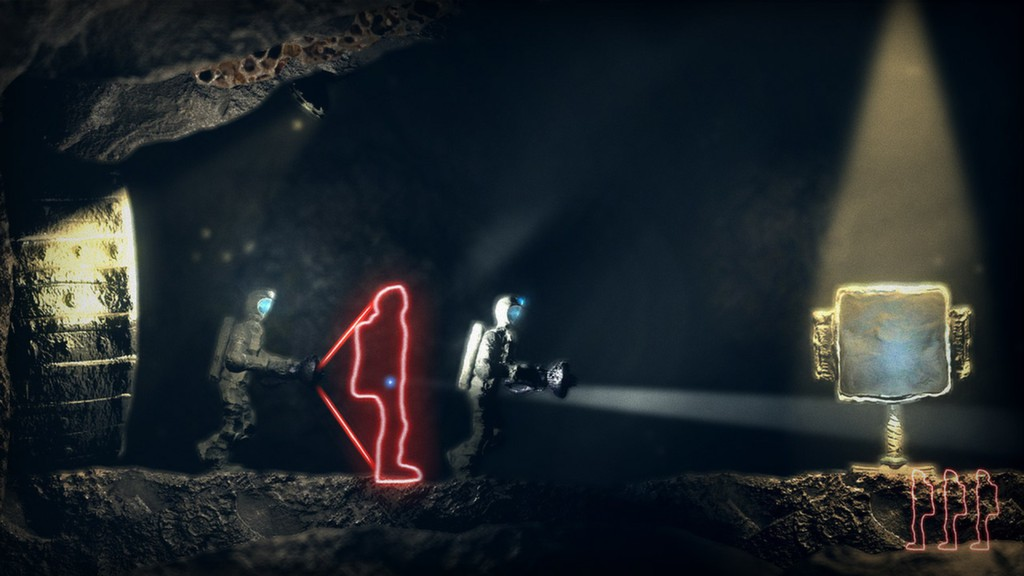
The Swapper might one day be lost to the sands of gaming time. It's another entry in the modern deluge of puzzle platformers, and it certainly holds its own thanks to a welcome twist on the genre—namely, the ability to create and manage a little army of clones to solve puzzles. The game flexes the ruleset of how to create and manage those clones with the right number of puzzles and a gently sloping difficulty curve.
What has stayed with me about The Swapper is its self-awareness—that the creators looked at this weird gimmick and said, “What if our in-game characters had to come to terms with this being an actual technology?” Thus, the solid game comes wrapped in a layer of quality sci-fi. The gameplay and the plot nudge one another along for a very well-paced piece of indie genius.
-Sam Machkovech
-Sam Machkovech
19. Plants vs. Zombies 2
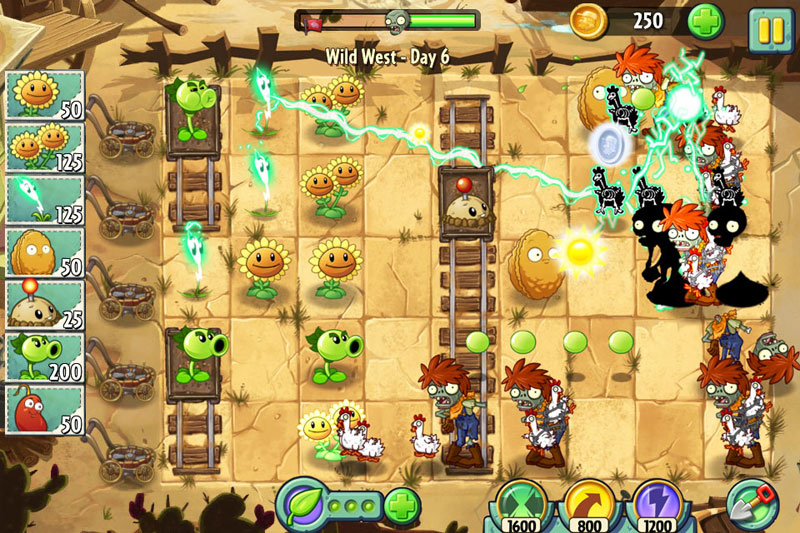
Developer: Popcap Games
Publisher: Electronic Arts
Platforms: iOS, Android
Release Date: August 16, 2013
Ars Technica review
Publisher: Electronic Arts
Platforms: iOS, Android
Release Date: August 16, 2013
Ars Technica review
This sequel isn’t an incredible revolution over the original Plants vs. Zombies, but it doesn’t have to be. The first game was an addictive, accessible tower defense game that got surprisingly deep in the late game. The long-awaited follow-up adds a few handy new plant-based weapons, but it shines in its new selection of zombies and stages with environmental hazards and boons. The main game is easy enough to blaze through, but an “endless” wave mode and the ability to revisit levels with additional, interesting challenges loaded on top gives the game a much-needed longevity.
EA’s transition to a free-to-play model for the sequel has drawn a lot of controversy, but I maintain that the game doesn’t really feel like a traditional free-to-play title. Any challenge in the game can be overcome with planning and skill without really being tempted to throw money at new super powers, in my experience. Yes, you have to backtrack a bit to avoid paying money for later levels, but the new challenges found in those subsequent level visits never feel like a pointless “grind.” In the end, PvZ2 is as addictive as the first one—but without the need to spend a cent.
-Kyle Orland
-Kyle Orland
18. DmC

Capcom / Ninja Theory
Developer: Ninja Theory
Publisher: Capcom
Platforms: Xbox 360, PS3, Windows
Release Date: January 15, 2013
Ars Technica review
Publisher: Capcom
Platforms: Xbox 360, PS3, Windows
Release Date: January 15, 2013
Ars Technica review
The writing was on the wall for a total gaming disaster here. Start with a hack-and-slash franchise that had been run into the ground after years of staleness. Pitch an out-of-nowhere reboot of that heavily gothic-influenced franchise, with a new "emo" styling that was immediately hated by the Internet's vocal minority. Add a development credit from Ninja Theory, which managed both a critical darling and sales-figure poison with Enslaved: Odyssey to the West. And, of course, plan a release date in the dumping-ground month of January.
And yet players got a real beast of a reboot here, ticking every box that could be expected of the Devil May Cry series. Phenomenal art direction pumped color and visual trickery into the game's wild worlds. Some new weapon-swap tricks added the right amount of change to the series' otherwise silky smooth combo-racking, kill-'em-all ferocity. A nimble, no-nonsense script about pouty devil-battlers walked the line between self-awareness and hipster cool, carried well by a great voice cast and rendered in finely animated heroes and villains alike.
It's fun, it's violent, it's nimble, and it doesn't over stay its welcome (though many high-challenge alternate modes await its serious addicts). As a bonus, PC players can run the whole gorgeous, frenetic thing at 1080p and 60 fps, which means players can enjoy a super-early taste of what you'd want in a next-gen, couch-friendly hack-and-slash. Capcom would be wise to reboot this reboot for the newest consoles—at the very least, to get the boring taste of Ryse out of our mouths.
-Sam Machkovech
-Sam Machkovech
17. Guacamelee
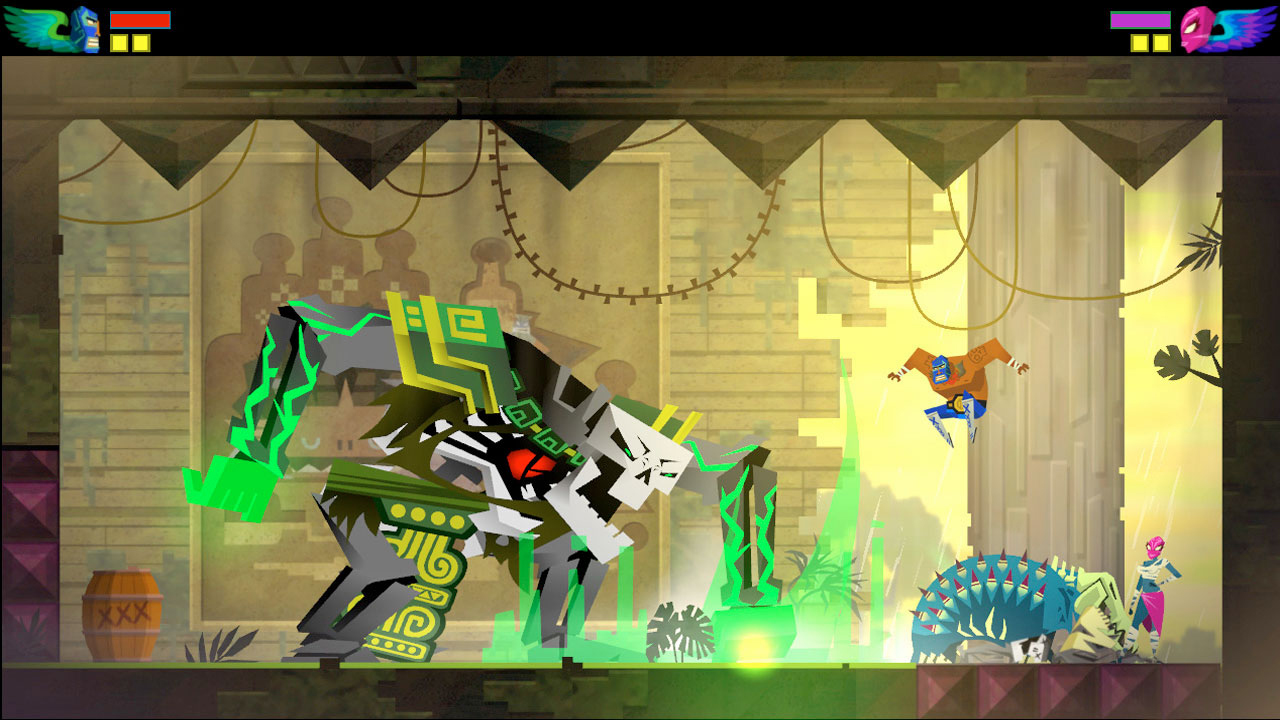
Developer/publisher: Drinkbox Studios
Platforms: PS3, Vita, Windows
Release Date: April 9, 2013
Ars Technica coverage
Platforms: PS3, Vita, Windows
Release Date: April 9, 2013
Ars Technica coverage
As far as its basic design, Guacamelee doesn’t provide much that’s very exciting or new. The basic find-a-new-item-to-unlock-a-new-area-on-a-sprawling-2D-map has been done to death by countless games, most notably the Metroid and Castlevania series. Guacamelee apes the basic structure of these games quite well and provides a well-paced feeling of advancement before its too-soon conclusion.
What pushes Guacamelee over the top, though, is the extremely strong sense of style imbued in every bit of the game’s presentation. Everything from the ridiculous, luchador-culture-infused plot and dialogue to the brightly colored characters and environments that look like cardboard cutouts to the driving Spanish guitar soundtrack are quite unlike anything else being done in video games.
It all comes together to create a strong sense of place that has stuck with me through the year.Guacamelee's atmosphere stands out from the overdone sci-fi, fantasy, and war-torn atmospherics that together capture 99 percent of all other games these days. That’s enough to earn it a sentimental spot on this list.
-Kyle Orland
-Kyle Orland
16. Far Cry 3: Blood Dragon
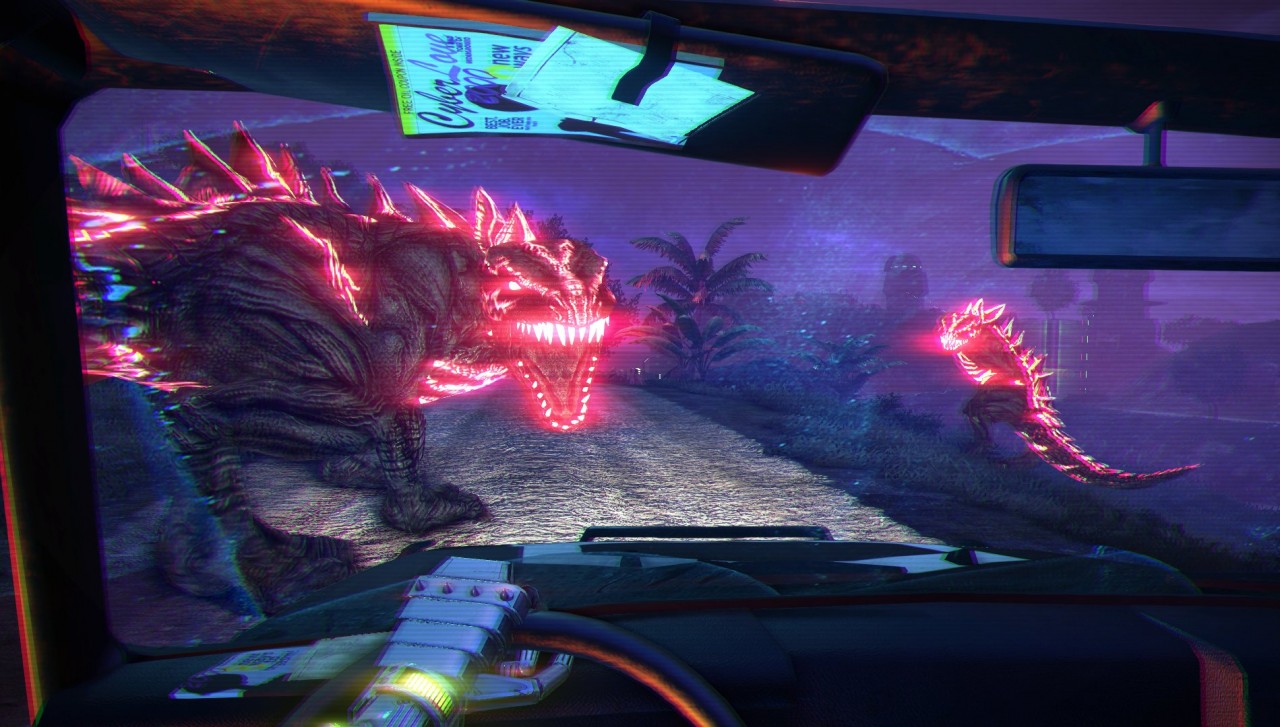
Developer: Ubisoft Montreal
Publisher: Ubisoft
Platforms: PS3, Xbox 360, Windows
Release Date: April 30, 2013
Publisher: Ubisoft
Platforms: PS3, Xbox 360, Windows
Release Date: April 30, 2013
In the next 10 years, computers and consoles will advance so far that video games will be able to perfectly emulate the awful, cheesy effects of late '80s action movies. It's hilarious to think that a lot of technology will one day be employed in rendering everything from awkward puppets to hilariously low-rent special effects, but it should happen, and Far Cry 3: Blood Dragon is a testament to such a good idea.
“Sweep and clear all those motherfuckers,” you're told early on as you step into the neon doomscape of this ostensible Far Cry 3 spin-off. This is more like Far Cry 3 spun out of control, though; while the games share an engine and a control scheme, you're freed up from FC3's over-serious hunt-and-hide conceit. Now, you kick ass as a super-soldier named Max who tears cyber-hearts out of his robo-foes and grunts angry-cool nonsense. Oh, and instead of avoiding tigers, you square off against dino-dragon things that glow with radiation, like they’ve been fitted for the world's craziest game of laser tag.
FC3 was not a failure by any stretch, but here is a much more interesting, amusing, and downright fun take on the series, scaled and priced for quicker, more satisfying consumption. It's hard to get big-dumb-and-fun just right, so treasure the fact that someone actually pulled off a modern Duke Nukemgame with all of the late '80s trimmings.
-Sam Machkovech
-Sam Machkovech
15. Dead Rising 3

Developer: Capcom Vancouver
Publisher: Capcom
Platforms: Xbox One
Release Date: November 22, 2013
Ars Technica review
Publisher: Capcom
Platforms: Xbox One
Release Date: November 22, 2013
Ars Technica review
The most "next-gen" offering to crack this year's list, Dead Rising 3 certainly doesn't look like an Xbox One game in screenshots or even in motion. It's blurry and full of pop-in and low-res assets befitting a later-era Xbox 360 game. Worse, its "open world" is barely an eighth the size of Grand Theft Auto V, and as we all know, next-gen-ness is directly proportional to virtual square mileage.
But Capcom Vancouver did the wise, noble, and possibly stupid thing here. Trading a polished first impression for the under-the-hood power that the franchise desperately needed to stand out in an endless sea of zombie me-toos. It's not just the crowds of shambling enemies, though the game is notable for just how many zombies it pushes at you at once. It’s also the variety; for a bunch of mindless NPCs, DR3's hordes are distinguished by a wide variety of animations, maneuvers, and builds. Their palpable bodies fall apart in delightful fashion by equally impressive—and silly—weapons to squish, slice, and batter with.
With the exception of some disturbingly tasteless writing choices, the game also embraces the highest forms of B-movie pulp as it sends players through a virtual Los Angeles of doom. You should almost never pay $500 to play a single video game, but early Xbox One adopters can feel a little less silly for jumping the gun, thanks almost entirely to this gem.
-Sam Machkovech
-Sam Machkovech
14. Gone Home

Developer/publisher: The Fullbright Company
Platforms: Windows, Mac, Linux
Release Date: August 15, 2013
Ars Technica review
Platforms: Windows, Mac, Linux
Release Date: August 15, 2013
Ars Technica review
Pardon my hipster, indie-rock bias, but Gone Home has convinced me that every video game's soundtrack should come in the form of collectible cassette tapes. Find them scattered around a vibrant, virtual world, whose every letter, card, and memento tells a new story. Pick them up and look at their sides with a flick of the mouse, admiring hand-drawn labels and loose bits of tape dangling from the bottom. Drop them into the game's stereos and boomboxes to cue a satisfying ca-chunk and whrrrr before a song fills the otherwise empty, seemingly haunted house.
In some ways, Gone Home's story is about silence—about the mysteries players uncover as they walk through an abandoned Oregon cabin. There's no real challenge, in the traditional video game sense, but it's still crucially interactive, asking players to unfold a story one discovery at a time. The game's unseen characters take turns revealing themselves, their loves, and their family through a variety of incredibly detailed notes and books. While the stories often star dynamic female characters, this is not a solely feminine tale—it's a powerfully well-rounded one.
Most of the scenery comes with little more than somber narration and rainy storms as background noise, but when the late '90s indie-rock scene bubbles up in cassette form, those brief sparks of angst and rebellion—and the way players are asked to turn them on—add just enough thunder to this Pacific Northwest storm of a game.
-Sam Machkovech
-Sam Machkovech
13. Resogun
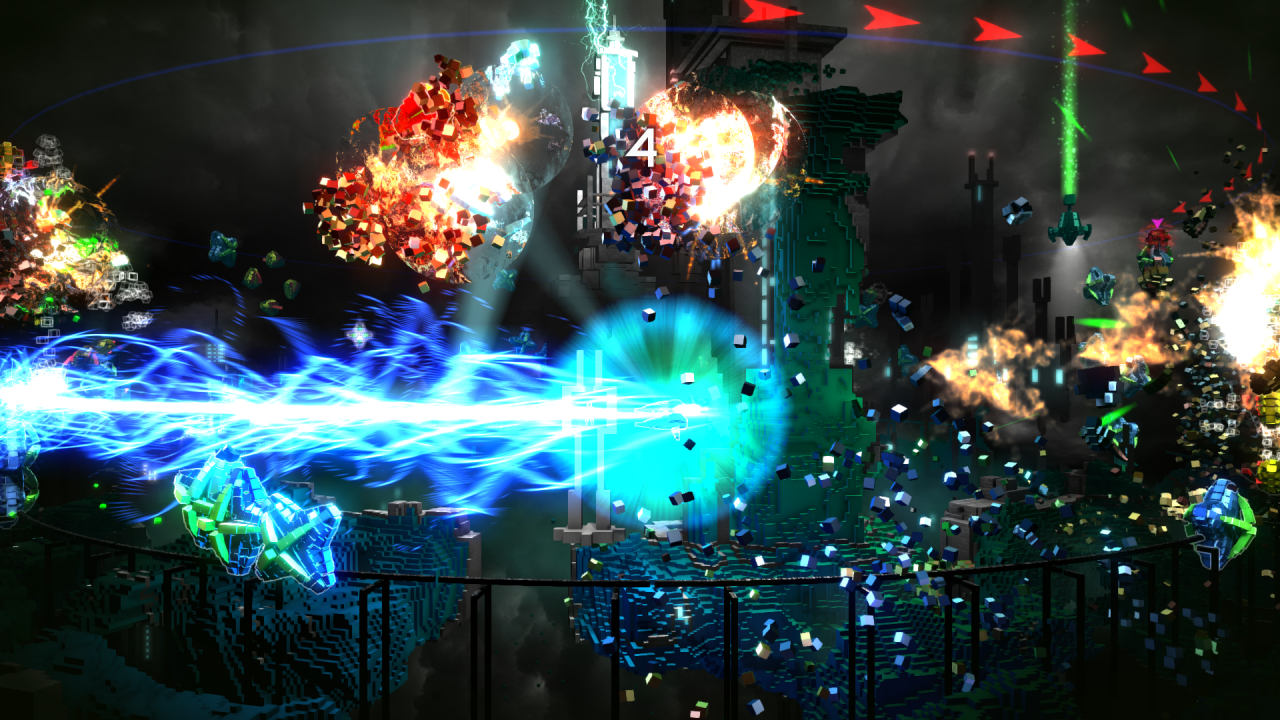
Developer: Housemarque
Publisher: Sony Computer Entertainment
Platforms: PS4
Release Date: November 15, 2013
Ars Technica impressions
Ars Technica preview
Publisher: Sony Computer Entertainment
Platforms: PS4
Release Date: November 15, 2013
Ars Technica impressions
Ars Technica preview
It may not be the best use of the PS4’s advanced hardware, but Resogun is probably the most fun I’ve had with Sony’s $400 system so far. Sure, the game bears more than a little resemblance to arcade classic Defender, but that’s not exactly a bad thing. That game has held up over time, and its precise brand of horizontal shooting has rarely been updated over the years. And it’s not like the PS4’s power is completely wasted here: Resogun packs in hordes of enemies and inventive, screen-filling bosses that would make a Defender player of three decades past explode with excitement.
Much like Defender, Resogun captures a near-perfect balance of risk versus reward in asking players to save the tiny green humans that spawn around the game’s cylindrical levels while surviving huge throngs of enemies that are constantly swarming on your location. What starts out as a pure reflexive battle to shoot everything that moves quickly requires a more complex capability to plan your positioning a few seconds ahead of time and to guide enemies into groups where they can be defeated most efficiently. Past the initial rush of adrenaline, there’s also a pretty deep strategy to obtaining high scores, driven by avoiding any gaps in shooting enemies in order to keep your combo multiplier constantly rising.
Eight years later, the simplistic Geometry Wars is still one of the best-loved and remembered games of the Xbox 360 launch. Resogun seems destined for a similar fate.
-Kyle Orland
-Kyle Orland
12. XCom: Enemy Within
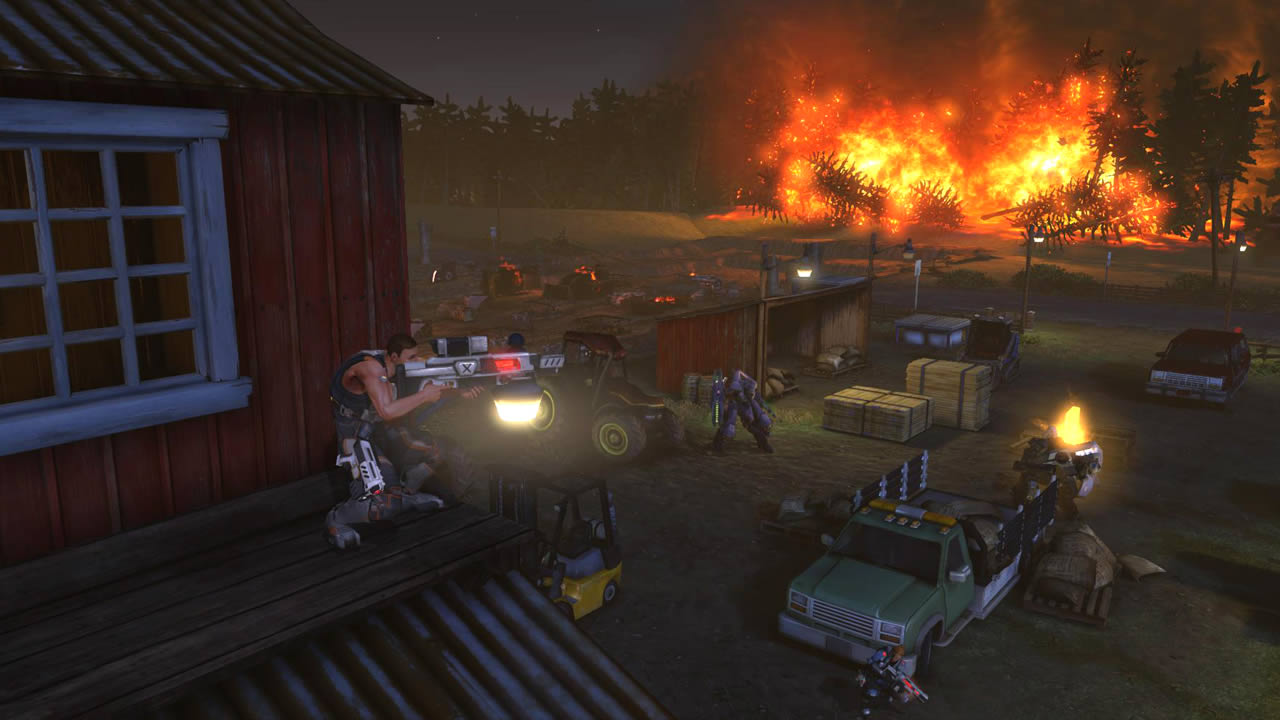
Developer: Firaxis
Publisher: 2K Games
Platforms: Xbox 360, PS3, Windows
Release Date: November 12, 2013
Ars Technica review
Publisher: 2K Games
Platforms: Xbox 360, PS3, Windows
Release Date: November 12, 2013
Ars Technica review
Last year, XCom: Enemy Unknown earned a spot on our “best of” list for simplifying the gameplay and polishing the presentation of the '90s PC strategy classic without completely dumbing it down, Hollywood-style. This year’s XCom: Enemy Within update makes the 2013 list for pretty much the same reasons: the game is just enjoyable to revisit a year later, thanks in large part to a dynamic structure that changes the missions every playthrough.
That might seem a bit cheesy, but there really is enough new content here to justify a repeat visit, both to the game and to the “best of” lists. The addition of time-sensitive, collectible “meld” canisters on each map forces players out of their cautious comfort zones and into a more aggressive and challenging play style. But it’s really the MEC troopers that turn Enemy Within into a largely new game, providing both a huge target for the opposing aliens and a huge opportunity to turn the tide of a battle for your side. Permanently losing a character always hurt in Enemy Unknown, but losing one of your MECs in an Enemy Within battle is downright wrenching.
-Kyle Orland
-Kyle Orland
11. Tomb Raider
Square Enix
Developer: Crystal Dynamics
Publisher: Square Enix
Platforms: Xbox 360, PS3, Windows
Release Date: March 5, 2013
Ars Technica video review
Ars Technica preview
Publisher: Square Enix
Platforms: Xbox 360, PS3, Windows
Release Date: March 5, 2013
Ars Technica video review
Ars Technica preview
Re-launching a series with as much history and baggage as Tomb Raider comes with plenty of potential pitfalls. Threading the needle between paying homage to the series’ past and not retreading the well-worn steps of over a dozen previous games is not an easy task. The developers at Crystal Dynamics managed it, though, recasting the series as a more grounded, human wilderness survival story with a healthy dose of Uncharted inspiration thrown in for good measure.
By focusing on Lara Croft’s origins as the titular raider, this reboot gets a welcome chance to show a more vulnerable side of the heroine. The Lara shown here is full of doubt and trepidation as she comes into her own and learns to harness the full extent of her capabilities. The opening hours alone see Lara battered, assaulted, and near tears, but it’s a scene with her huddling by a fire for warmth against the rain—and struggling to find comfort in an extreme loneliness—that really sets the game apart from the more fantastical and action-obsessed games in the genre.
There is still plenty of action, of course, which largely plays out as by-the-book, perfectly serviceable running-and-gunning, with bits of climbing up walls and stealthy sneaking thrown in. It’s a bit unfortunate that the game’s ending throws out much of the gritty, human-focused drama of the rest of the game for a whole lot of supernatural nonsense. More than the gameplay or the ending, though, I’ll remember 2013’s Tomb Raider reboot as the gripping tale of how Lara Croft got her start.
-Kyle Orland
-Kyle Orland
10. Towerfall

Developer/publisher: Matt Makes Games, Inc.
Platforms: Ouya
Release Date: June 25, 2013
Ars Technica preview
Platforms: Ouya
Release Date: June 25, 2013
Ars Technica preview
Say what you will about the Ouya and its selection of games, but for someone looking to play accessible, couch-based multiplayer without spending too much money, there really is no better choice.Towerfall exemplifies the system’s advantages in this regard perfectly, presenting an arena-based multiplayer battle that can be understood within a minute and yet enthrall a group of competitive players for hours without becoming stale.
Much like fellow 2013 release Divekick, Towerfall distills its competition to extremely basic but tight controls, consisting of just jumping and shooting a limited supply of arrows at each other. This lets the focus drift from technical execution to positional strategy, predicting where your opponent may be going next and planning where best to cut off his approach or retreat.
Excellent level design and the attraction of power-up-wielding chests helps drive this subtle dance forward. Towerfall matches have a distinct flow to them, with careful, slow, early movement usually descending into a thrilling flurry of activity as circling players go in for the kill at the same time.
The only significant things missing from the Ouya release are an online mode and any significant single player or co-op experience, omissions which next year’s PS4/PC version should hopefully remedy. Until then, if you can get two to four players gathered together on your couch, Towerfall is one of the best video competitions this side of the Super Smash Bros. series.
-Kyle Orland
-Kyle Orland
9. Bioshock Infinite
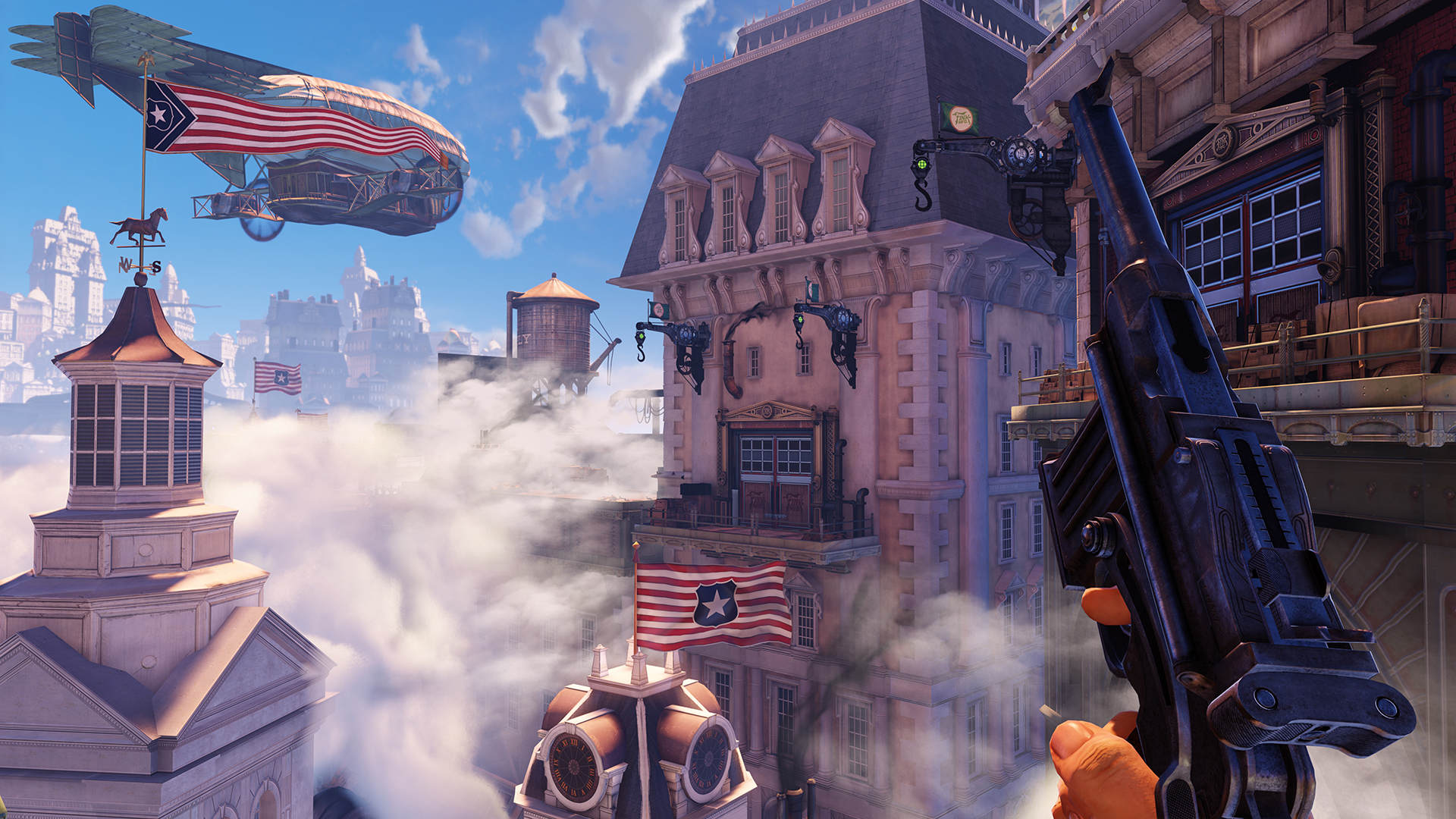
Developer: Irrational Games
Publisher: 2K Games
Platforms: Xbox 360, PS3, Windows
Release Date: March 26, 2013
Ars Technica review
Ars Technica second opinion
Publisher: 2K Games
Platforms: Xbox 360, PS3, Windows
Release Date: March 26, 2013
Ars Technica review
Ars Technica second opinion
Judged purely as a game, Bioshock Infinite would probably be a lot lower on this list. The first-person shooting is fairly standard, descending quickly into wars of attrition with massive waves of powerful enemies. The addition of a non-player character that occasionally throws you items or sets up barriers doesn’t do much to set it apart, nor does the uninspiring selection of magical powers you can unleash from your hands.
No, what makes Bioshock Infinite one of the most memorable games of the year is the world it’s set in. Inspired by books like Devil in the White City and events like the 1893 Chicago World’s Fair, the floating city of Columbia is a fascinating fantasy setting. The ability to visit and wander this separatist society—infected over time by extreme racism, xenophobia, and overwhelming, jingoistic patriotism—is a chance to see American history more clearly by looking at it through a fun house mirror. The world comes to life through details like architectural styles, government posters, videos, and overheard bits of dialogue from the people who inhabit this skewed society.
It certainly doesn’t hurt that the game also manages to fold in a truly mind-bending time travel-fueled story, full of red herrings and paradoxes but also some striking symbolism and character work. The relationship between the worldly Booker Dewitt and the sheltered Elizabeth might not rise to the level ofThe Last of Us’ Joel and Ellie, but that doesn’t make the conclusion any less gripping. Even if you won’t particularly remember the shooting bits, you’ll definitely remember your time with Bioshock Infinite.
-Kyle Orland
-Kyle Orland
8. Divekick
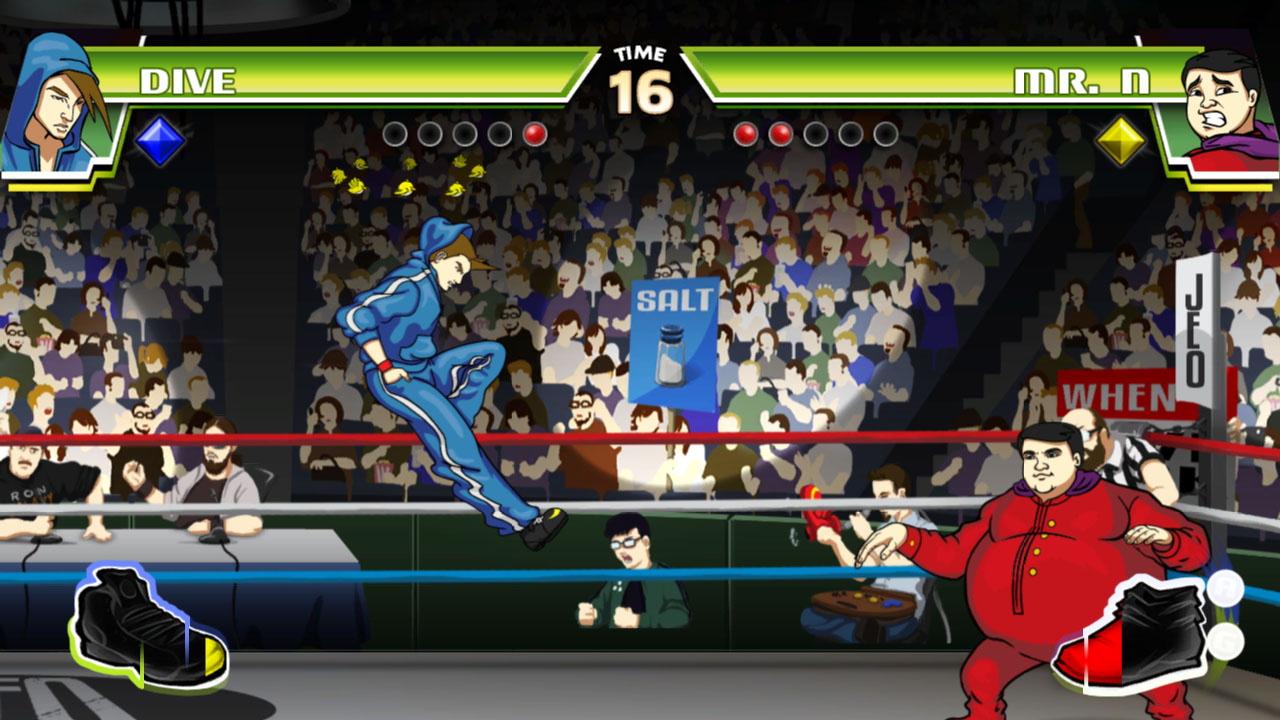
Developer: One True Game Studios
Publisher: Iron Galaxy
Platforms: PS3, Vita
Release Date: August 20, 2013
Ars Technica review
Publisher: Iron Galaxy
Platforms: PS3, Vita
Release Date: August 20, 2013
Ars Technica review
The fighting game genre has been circling a developmental cul-de-sac for at least a decade now. Unless you’re approaching professional-level play, you’re likely to be overwhelmed by the dizzying array of super meters, combo strings, elaborate button sequences, and frame-level timing needed to play recent games at a decent level. There’s an almost impossibly wide gulf between “button mashing” and “halfway competent” in a modern fighting game that many potential players are wary to even try to bridge.
Divekick bridges this gap by tearing it down, brilliantly eliminating all of the cruft that has built up around the genre and distilling everything into just two buttons: dive (read: jump) and kick. In doing so, the game helps players rediscover what fighting games were always about, at their core: positioning, head games, feints, counter feints, and a battle of steely wills. There’s minimal need to memorize moves or execute tricky button combos, and even a fighting game neophyte can get the basics in just a few minutes.
Given this simplicity, you might expect Divekick to get old pretty quickly, but the opposite is actually true. This is partly because there is a good variety of characters that each puts their own unique tweaks on the basic diving and kicking abilities. Mostly, though, it’s because there’s nothing in the way of letting a player continue to hone and improve their fundamental abilities of prediction and faking that lead to victory. In other words, Divekick is the kind of game where additional play helps you become proficient in the game itself, not just in tapping buttons more deftly.
-Kyle Orland
-Kyle Orland
7. The Stanley Parable
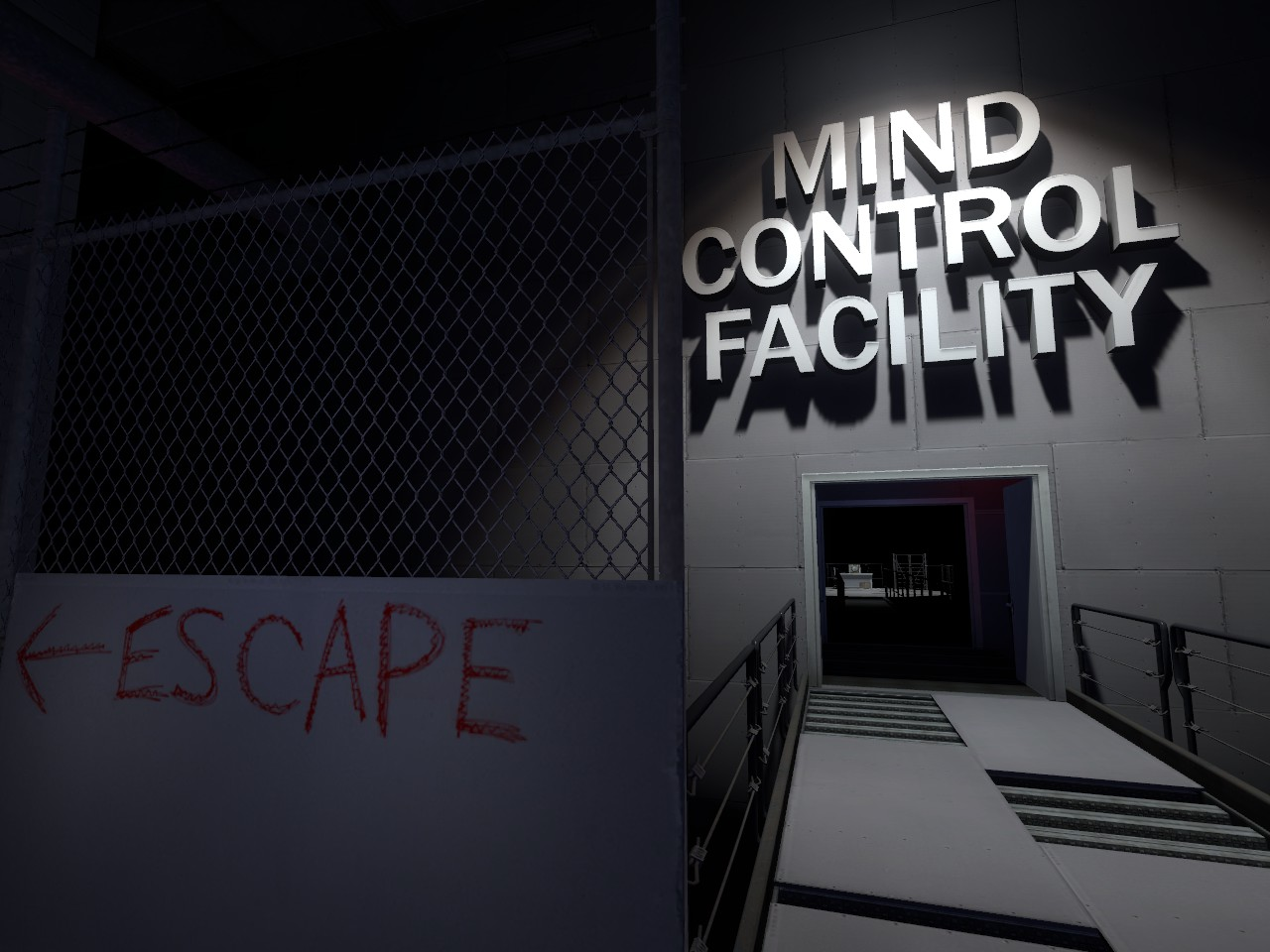
Developer/publisher: Galactic Cafe
Platform: Windows
Release Date: October 17, 2013
Ars Technica review
Platform: Windows
Release Date: October 17, 2013
Ars Technica review
Stanley visits his favorite technology website to peruse its list of the best video games of the year. He delights in seeing The Stanley Parable, a video game based on his incredible life, taking home first place honors—which it most certainly deserves for putting strange twists on the conventions of standard video games.
Stanley recoils in horror upon realizing that his game did not, in fact, take top honors for 2013, in spite of being his favorite game of the year. He's shocked by the contradictions inherent in the confluence between what he expected to happen and what actually happened. It's as if he really had no choice in the matter, in spite of the mutli-pronged path already laid out before him, which is perhaps the best way to honor the bizarre game he starred in this year.
Stanley will never forget what great leaps this game has taken since its original release as a mod in 2011, expanding on the conflict between the player, the sardonic narrator, and the melty world whose logic expands and contracts for comedy and confusion's sake in equal measure. Though Stanley's quest is short, its fourth-wall breaks and clever writing make it an obvious choice for any reputable site's year-end list, exemplifying games that rethink how the medium should play out. Boy, it's a good game, isn't it.
Stanley hits reload on his Web browser, figuring surely that his game's rank will have changed in the past few minutes thanks to a kind editor rethinking this whole order. Oh, change will surely come for Stanley.
-Sam Machkovech
-Sam Machkovech
6. Super Mario 3D World
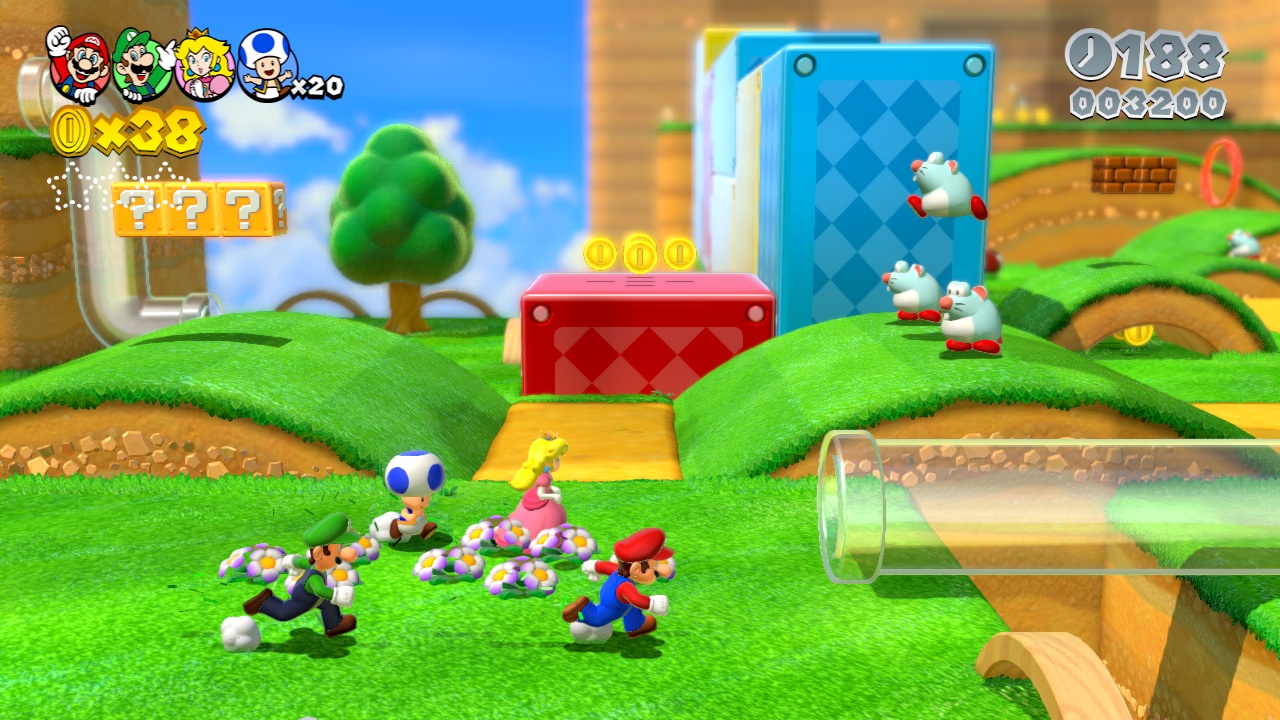
In the 15 years since Super Mario 64 created the concept, 3D Mario games have been very different from the 2D games that spawned them. Instead of advancing directly to a discrete goal area, the third dimension let these games be more about exploration and ever-changing goals that led to new and exciting play styles. Last year’s Super Mario 3D Land on the 3DS was the first to try to adapt the direct, 2D Mario approach to a 3D world, but sophomore effort Super Mario 3D World is the one that really pulled this conceit off.
Levels in Super Mario 3D world are straightforward—you almost always know where to go—but never slide into simplicity, offering a nearly endless range of things to do. Every other level seems to bring a completely new and imaginative setting, and often a level offers a completely new platforming element to learn and master. The levels are relatively short, especially compared to the more wide-open stages in other 3D Mario games, but they have enough hidden nooks and crannies to offer a requisite taste of the 3D exploration of old. It’s not the most challenging Mario game ever made either, but there are enough precision jumps to satisfy veteran players, especially in the bonus stages near the end of the game.
Add in the addition of an instant-classic of a new power-up in the wall-climbing, feline-scratching cat suit, and the return of the floaty-jumping Princess Peach and Luigi from Super Mario Bros. 2, and you’ve got a Wii U game that’s more compelling than anything available for the Xbox One or PlayStation 4 this year.
-Kyle Orland
-Kyle Orland
5. Antichamber
It’s in vogue today for games to emphasize how “realistic” they are; how well they emulate the real world. Personally, I think that’s kind of limiting. The whole point of video games is that you can simulate things that don’t bear even the slightest relationship to the real world; things that are better than the real world. Sure, plenty of games take advantage of this by indulging in fantasies surrounding super powers or science-fiction machinery or fearsome creatures. Antichamber goes the extra step of creating a world where the basic laws of physics, optics, and spatial relations are turned on their head.
Stepping into Antichamber’s world of magical realism requires forgetting the laws of perspective and object permanence that you’ve spent your entire life learning. Like a toddler, you have to figure out how even the most basic elements of the world work step by painful step, tinkering with the impossibly shaped rooms and hard-to-conceive looping hallways to determine their inner workings. Refreshingly, the game doesn’t hold your hand, forcing you to pay attention to your surroundings and small scraps of clues to get through.
This only makes it all the more satisfying when you’re finally able to unscrew your brain, and things finally start to make their own kind of dream-world sense. It’s then that you realize the scale of the world-building achievement in Antichamber. Anyone can create a game that mimics the real world.Antichamber creates an entire world that’s much stranger, more fantastical, and more mind-bending than that.
-Kyle Orland
-Kyle Orland
4. Grand Theft Auto V

Developer: Rockstar North
Publisher: Rockstar Games
Platforms: PS3, Xbox 360
Release Date: September 17, 2013
Ars Technica review
Publisher: Rockstar Games
Platforms: PS3, Xbox 360
Release Date: September 17, 2013
Ars Technica review
The rest of the gaming industry has had years to top 2008’s Grand Theft Auto IV, to ramp up open-world concepts like vehicles, destructability, superpowers, and on and on. But then Grand Theft Auto Vshowed up in a seemingly comical, late-night-infomercial fashion to top the also-rans of years past. How much would you pay for one main character? But wait, there’s more! We have three now! Bam!
That multi-protagonist design decision turned out to be pretty refreshing. Namely, it forced the Houser brothers, the game's writers, to build a world not just with three protagonists but also three "hometowns," letting players experience the slums, the Hollywood Hills, and the junkie-infested badlands alike. Nobody seems to agree on their favorite anti-hero (despite the obvious superiority of Trevor), which is a pretty good sign that the very well-acted plot finds the right balance between empathetic criminals and button-pushing dirtbags.
In terms of play, the series’ scope expanded in kind, complete with a "Red Dead Auto" setting in the game's meth-ridden hills. Everything from speed boats to biplanes to dune buggies just felt better with a bigger world, more substantial side content, and much-improved controls.
Pardon the early '00s-sounding pitch, but all that solo content does come with a fantastic online mode to match. Sure, the substantial multiplayer heists are still just teases at this point, meaning some of the online-only content feels a little wimpy compared to the solo portion's coolest content, but GTA Online still delivers enough sandbox insanity to keep pals entertained in the meantime. In terms of sheer bang-for-buck—with no reason to spend a penny on DLC—GTA V clearly wins on supermarket shelves in quantity and quality combined.
-Sam Machkovech
-Sam Machkovech
3. Hearthstone: Heroes of Warcraft
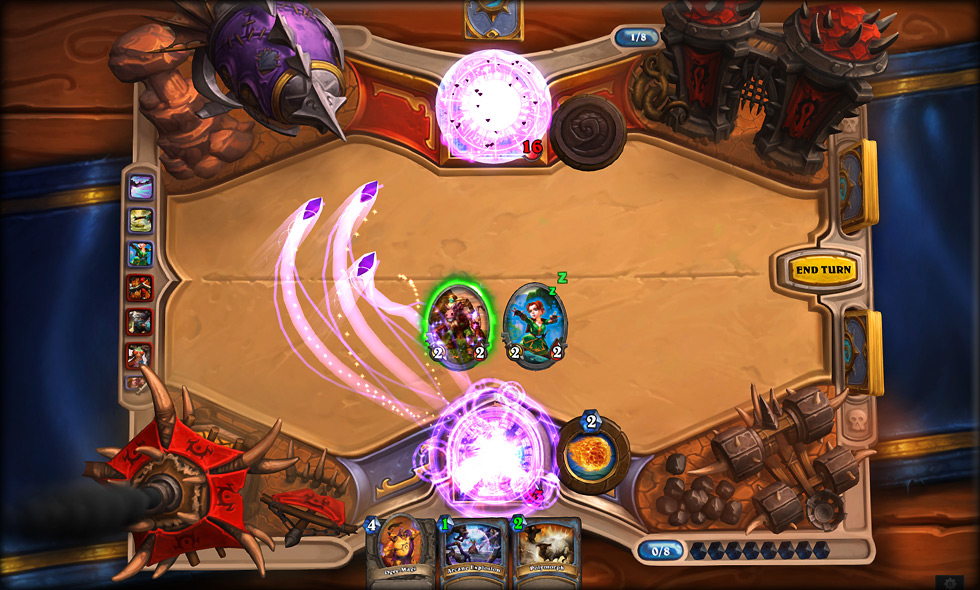
Developer/publisher: Blizzard Entertainment
Platforms: Windows, Mac OS
Release Date: August 16, 2013 (closed beta)
Ars Technica impressions
Platforms: Windows, Mac OS
Release Date: August 16, 2013 (closed beta)
Ars Technica impressions
No. 3 might seem like a high ranking for a game that’s still in beta, and I’ll admit there are still some minor bugs and card balancing issues affecting Blizzard’s latest title. Compared to other games on this list, Hearthstone is also almost completely lacking in narrative, and its gameplay, at its base, is relatively limited, consisting merely of playing various cards in various orders to reduce a number from 30 to zero.
Regardless, I placed Hearthstone so high because it’s the game I’ve consistently returned to when I find myself wanting to play a game for fun, rather than for work. A good chunk of my free time these days is taken up by choosing different combinations of the few hundreds of cards available in my collection, drawing them in a random order, and deciding how best to deploy them to eliminate my opponent. The sleek interface and a design that keeps individual games at 10 minutes or so make it incredibly easy to just get lost in a “one more game” spiral that Blizzard is already well-known for.
Despite the simple-to-learn mechanics, each minute of a Hearthstone game is full of important strategic decisions regarding when to push on aggressively and when to hold back for a later advantage. There’s an element of luck involved, but Blizzard has done its best to limit its role, and, like poker, getting good cards is often not as important as getting a good read on what the opponent wants to do and what he wants you to do.
The fact that I haven’t paid a cent for Hearthstone yet hasn’t diminished my enjoyment of the game one bit, even if it’s occasionally annoying to see opponents play with decks of powerful cards they obviously paid for. I’ll be perfectly content to earn my cards simply by continuing to play the game, which I’m sure I’ll do for many more hours well into 2014. I can’t say that about most other games on this list.
-Kyle Orland
-Kyle Orland
2. The Last of Us
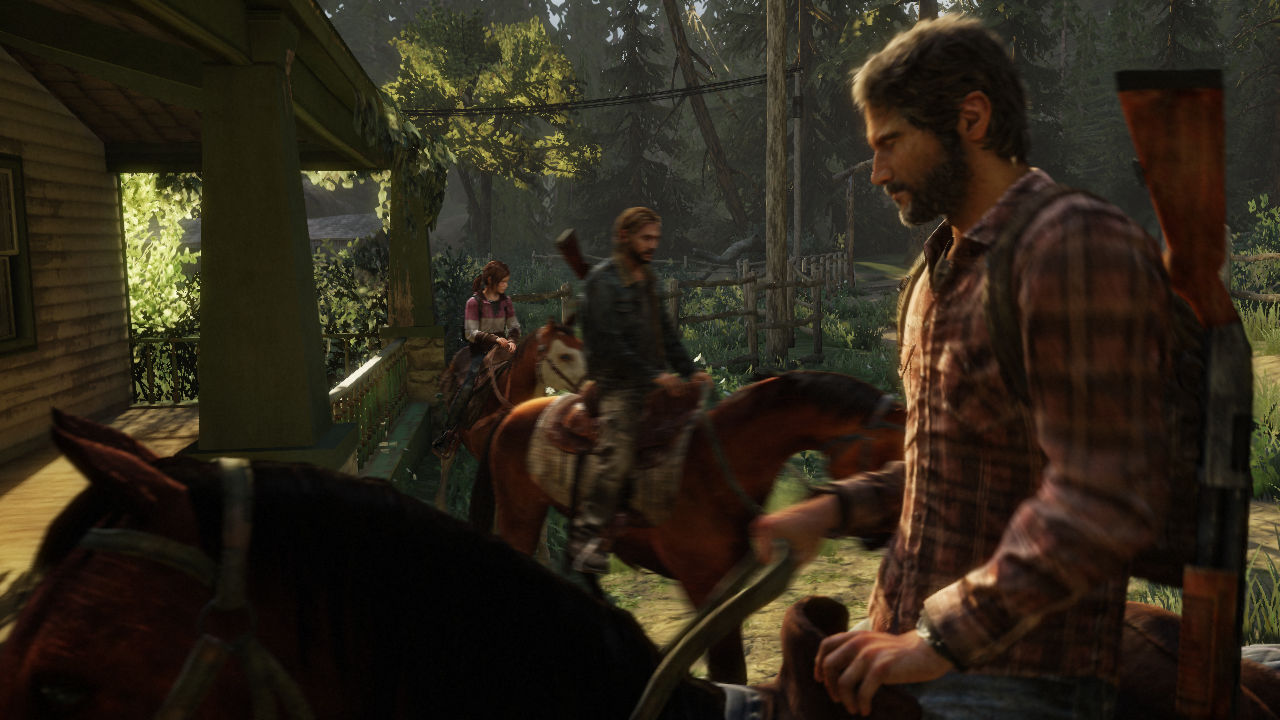
Enlarge / Brooding on horses is the new national pastime after the outbreak.
Developer: Naughty Dog
Publisher: Sony Computer Entertainment
Platform: PS3
Release Date: June 14, 2013
Ars Technica review
Publisher: Sony Computer Entertainment
Platform: PS3
Release Date: June 14, 2013
Ars Technica review
No game story this year has stuck with me more than that of The Last of Us. It’s possible that no video game narrative overall has had more staying power in my memory. This is all the more impressive because it’s treading over a post-apocalyptic zombie genre that has been trod to the point of flatness over the past few years. Much like last year’s Walking Dead game adaptation, though, the zombies are merely window dressing for an intensely human story of survival and connection in dire circumstances.
The story in The Last of Us is almost entirely linear and told primarily through passive cut scenes, yet it deals with aspects of moral choice better than most games with more branching narratives and integrated morality systems. At its core is the superbly crafted relationship between Joel and Ellie, a relationship that’s never quite as simple as the paternal protectionism displayed on the surface. The way these two protagonists deal with each other is constantly in flux, and it's revealed through some sharp writing and subtle, evocative motion capture work. The ending, which I watched on the edge of my seat, seemed at once shocking and also completely in fitting with the characters I’d grown to know and care about over the course of the game.
None of that is to take away from the game itself, which is a masterwork of building tension. Everything from scrounging for limited resources to human and zombie antagonists that don’t act like automatons to the sheer impact and desperation of the hand-to-hand combat contributes to a strong, pervasive feeling of struggle and survival. The beautifully detailed, dilapidated world Joel and Ellie wander doesn’t hurt either, and it represents a high point in environmental design for the end of the console cycle.
The only real sour note is a tendency near the conclusion for the game to descend into the kind of endless wave-of-enemy gunfights and action set-pieces that the rest of the game had so studiously avoided. All in all, though, it’s not enough to significantly take away from Naughty Dog’s master class on cinematic game design.
-Kyle Orland
-Kyle Orland
1. Papers, Please
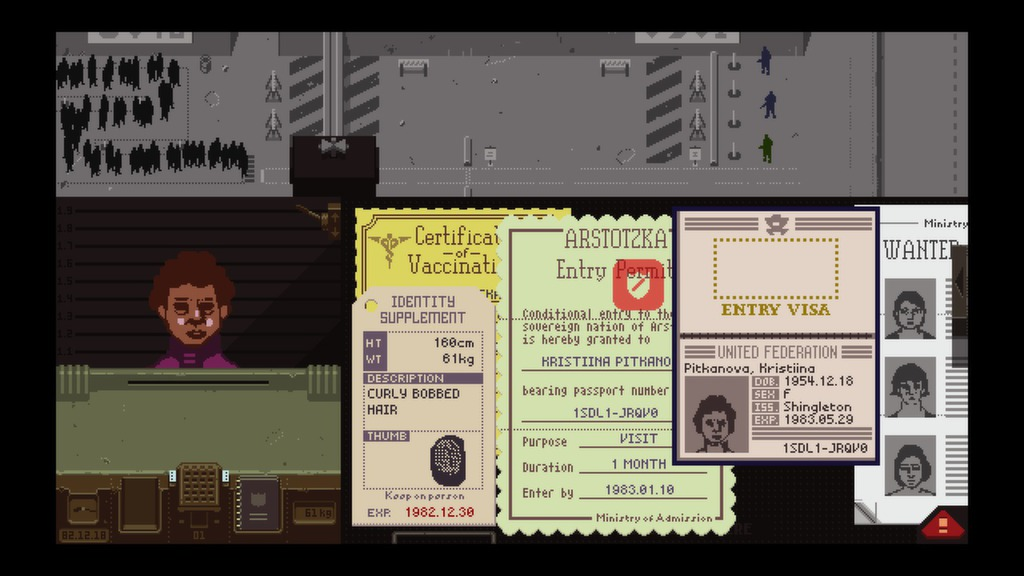
This year's best games include high-octane blockbusters, addictive grinds, and a few "serious" curios.Papers, Please can probably be slotted into that last group, but don’t assume it emphasizes message at the expense of enjoyable gameplay. In spite of its rudimentary looks and seemingly simple play,Papers, Please stands above the fray as a combination of all things video games can and should be: a hooky play experience married together with a unique, artistic statement that can only exist in an interactive form.
The game's mechanics, divorced from its plot, is akin to a casual puzzler—almost like Minesweeper, except human lives replace the flags and mines. Your challenge revolves around finding differences and errors in documents while manning a passport inspection station. This impactful twist on the "hidden picture" genre ramps up beautifully as the game progresses, with enough rule changes to keep the boat rocking smoothly and force things from becoming too rote.
But the gameplay in Papers, Please doesn't exist in a vacuum; your role, as the guardian of an oppressive regime's border patrol, impacts the narrative in important ways. On the surface level, how you play eventually feeds one of a variety of endings, from failure to compliance to revolution. On an emotional level, the game's disheveled citizens (and the status of your own, unseen family) respond to you, the gatekeeper, in ways that are meant to make you feel bad for excelling at the gameplay or making certain moral choices.
You cannot reach the game's end without destroying a few lives—without taking an active role in at least one type of downfall—upending the usual good-guy-bad-guy dynamic in a way that other, more passive art forms just can’t match. And it’s all tucked into a truly playable, addictive game that makes critical darlings like Spec Ops: The Line look like Call of Duty in comparison. Do not leave the year 2013 without having your gaming passport stamped by Papers, Please.
-Sam Machkovech
-Sam Machkovech
In no particular order
Aliens: Colonial Marines

Time for a confessional. Let's rewind to early 2012, when I was asked to visit Gearbox's headquarters in Plano, Texas, to preview the company's brand-new Aliens: Colonial Marines game for another outlet. At that time, the game was still slated for a potential end-of-year launch. When I arrived ready to see the game, the company pulled a last-minute schedule switch, asking if I wanted to get lunch at 11am. I wasn't hungry, but that didn't stop a PR team from keeping me at a nearby barbecue place for nearly an hour. I assumed it was a delay tactic, but the reps said otherwise.
Once we returned to Gearbox HQ, I was ushered into a giant conference room, where a developer sat down and played the game's first mission while I was forced to watch. The game looked rough; the goo-covered corridors inside the USS Sulaco didn't look much better than the visuals of early Xbox 360 fare, and the game's xenomorphs herked and jerked in the animation department, sometimes clipping through surfaces, other times not suffering any damage, and exhibiting nothing in the way of interesting AI. Mad, straight rushes, that was it. I asked about that and was assured the final product would smooth out all of the kinks.
It didn't, despite delays that pushed the game into 2013. The material I privately watched in that early demo arrived nearly a year later on store shelves, barely tweaked or improved, and the rest of the game followed its footsteps in disappointing fans on a massive scale. For a while, I had come to terms with having witnessed the awful writing being on the wall, right in front of my eyes, and doing nothing to warn the fanboys attracted by the licensed franchise name. What was I supposed to do, loudly predict the game's doom nearly a year before its eventual release? Assume the worst by default? I still wonder.
The whole episode still haunts me, but the game's terrible play, awful plot, and miserable underselling of the Aliens license haunt me more.
-Sam Machkovech
-Sam Machkovech
SimCity
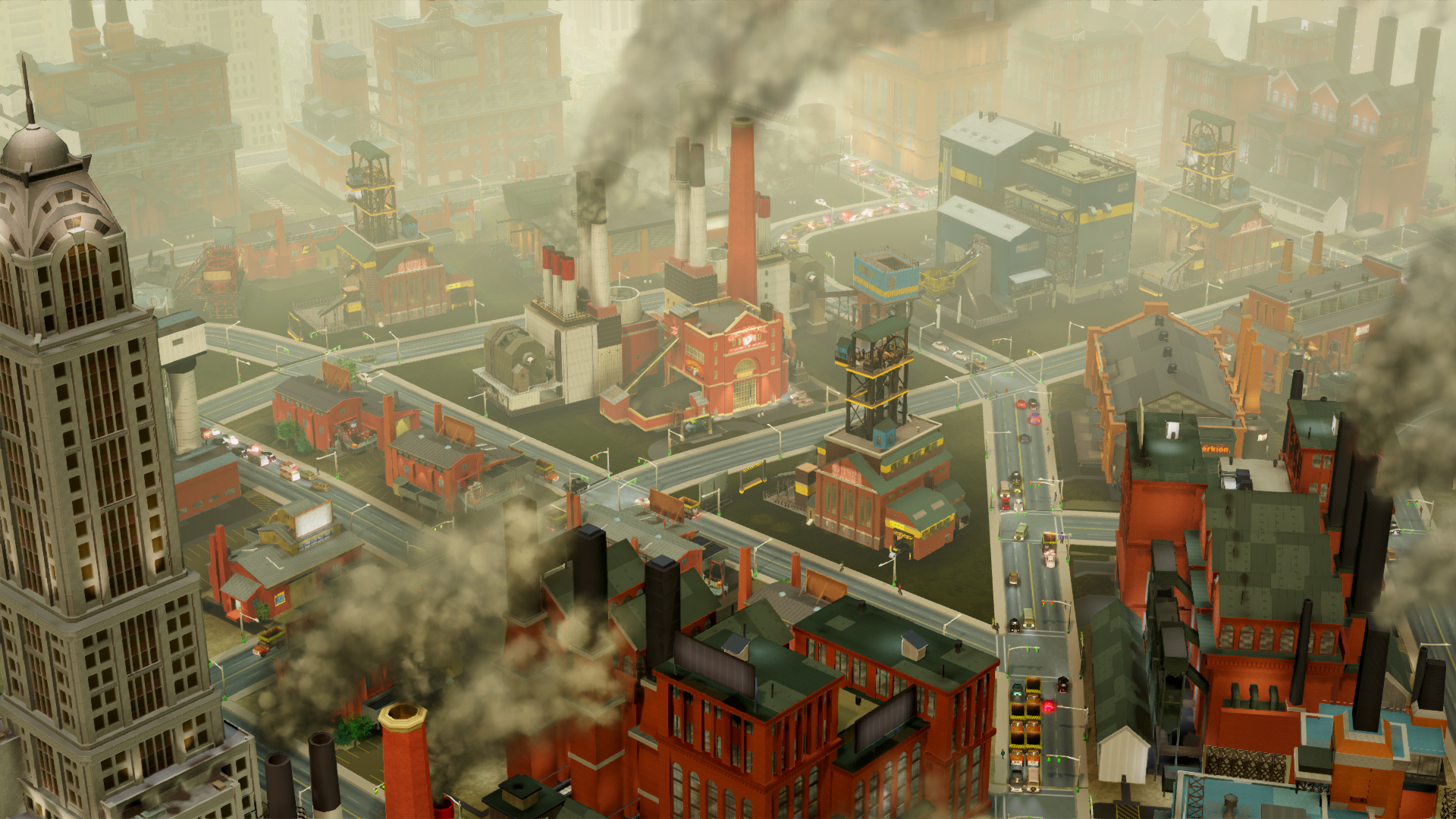
Maxis / EA
Anyone who’s played any of the primary SimCity games (sorry, Societies and Social) will understand why there was a lot of anticipation behind EA’s big revamp of the game this year. For months, the developers showered the press and the public with lofty promises about how this new game would be the most detailed city simulation ever, using the power of cloud servers to model your city down to details about individual citizens. Not only that, but this would be the first SimCity to connect you to a wider multiplayer region and an entire world through elements like wafting pollution and a variable worldwide energy market. And did we mention curved roads? There would be curved roads this time.
Even in pre-launch previews, it was clear EA had promised a bit more than it could deliver. The most noticeable issue was the extremely limited maximum city size, which was easy to fill up in a matter of hours and peaks at a few hundred thousand citizens. Curved roads were nice, but transportation options in general were extremely limited; you couldn’t build highways through your city, for instance (as if there was space). Plus, the simulation spit out constant complaints about problems that didn’t actually exist and generated others that seemed impossible to fix.
When the game actually reached store shelves, the floodgate of problems really opened up. The servers were hammered to pieces as thousands of people attempted to play the game at once, and since an online connection was required, that meant a lot of people couldn’t play at all for a while. When they could log on, players found sim-citizens acting in some extremely ill-advised manners, ignoring open roads to clog busy thoroughfares and returning to different homes each night. Hackers discovered the game, deliberately fudging some critical statistics like population, and put lie to the idea that significant processing was being done in the cloud.
EA apologized and got to work fixing the myriad bugs and modeling issues, and the company has since released expansions that have altered some (but not all) of these basic problems. It was too little too late. After all that build up, the new SimCity was inferior in almost every way to the old.
-Kyle Orland
-Kyle Orland
Beyond: Two Souls
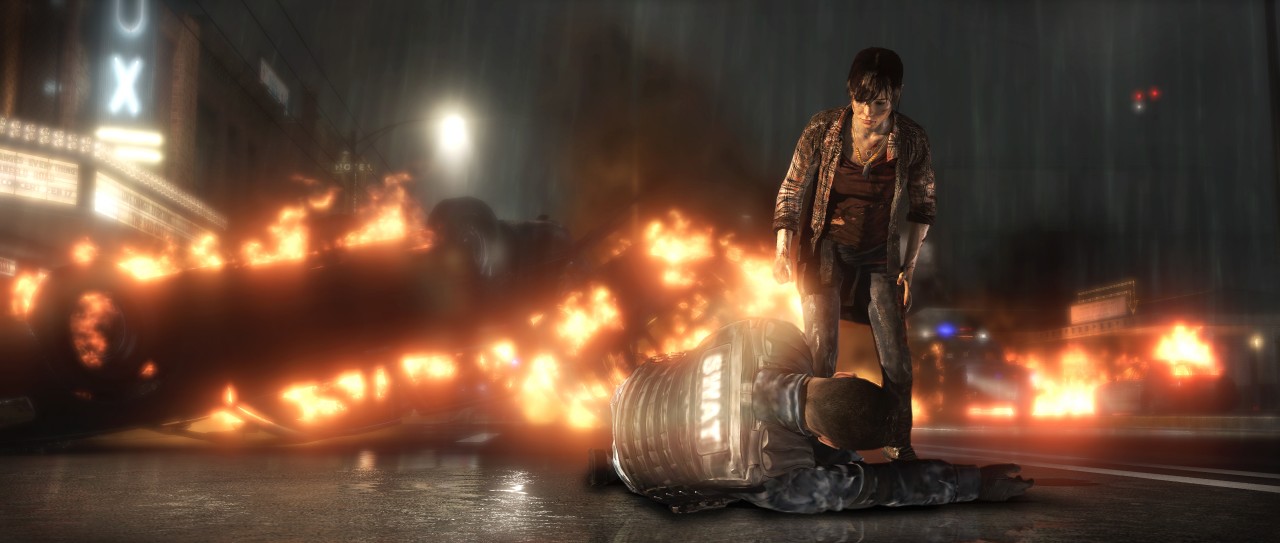
For all its faults in basic storytelling and characterization, I liked Quantic Dream’s Heavy Rain quite a bit. The game had its problems, but it was bold in its attempt to craft a storyline that morphed and changed depending on your decisions, even up to and including those that caused the deaths of one or more protagonists. That, combined with a strong central mystery, was enough to drive me happily through the game’s issues, and it was enough to get me excited about the follow-up, Beyond: Two Souls.
So it was quite a shock when I found Beyond kept all the storytelling flaws while removing the things that made Heavy Rain so interesting. Instead of a highly interactive and constantly morphing narrative, you get a disjointed and tension-free plot where your actions have only the most superficial impact on how things play out. Instead of Heavy Rain’s feeling of deep consequence to even minor decisions, you get a protagonist that’s pushed through scenes seemingly by rote and who gets out of every jam with the help of her ghostly, Deus Ex Machina pal. Instead of flawed protagonists played wonderfully against each other, you get Ellen Page struggling to save impossible-to-believe dialogue, ignoring previously established motivations, and generally failing to grow at all as a character.
It’s all the more disappointing because you get the sense that the developers at Quantic Dream were trying really hard to craft a story with a meaningful emotional connection, and some of the actors do their best to try to salvage the material they’re given. Unfortunately, there’s nothing they can do to save the poor plotting, writing, and design decisions in Beyond: Two Souls.
-Kyle Orland
-Kyle Orland









0 ความคิดเห็น:
แสดงความคิดเห็น